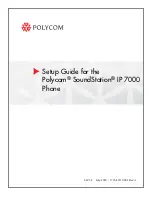
7
The radio wave exposure guidelines employ a unit of measurement known as the Specific Absorption Rate, or
SAR. Tests for SAR are conducted using a standardized method with the
phone transmitting at its highest certified power level in all used frequency bands. While there may be differences
between the SAR levels of various ZTE phone models, they are all designed to meet the relevant guidelines for
exposure to radio waves.
The SAR limit recommended is 1.6W/kg averaged over one(1) gram of tissue. The highest SAR value for this
device when tested at the ear was 0.868 W/kg*, and when tested at the body it was 1.44 W/kg SAR compliance for
bodyworn operations is restricted to belt-clips, holsters, or similar accessories that have no metallic component in the
assembly and which provide at least 1.5 cm separation between the device, including its antenna, and the users body.
Safety and General Use in Vehicles
Safety airbag, brake, speed control system and oil eject system shouldn’t be affected by wireless transmission. If
you do meet problems above, please contact your automobile provider. Do not place your phone in the area over
an airbag or in the airbag deployment area. Airbags inflate with great force. If a phone is placed in the airbag
deployment area and the airbag inflates, the phone may be propelled with great force and cause serious injury to
occupants of the vehicle.
Please turn off your mobile phone at a refueling point, and the same to the place where the use of two-way radio
is prohibited.
Aircraft Safety
Please turn off your mobile phone before the airplane takes off. In order to protect airplane’s communication
system from interference, it is forbidden to use mobile phone in flight. Safety regulations require you to have
permission from a crew member to use your phone while the plane is on the ground.
If the mobile phone has the function of automatic timing power-on, please check your alarm setting to make sure
that your phone will not be automatically turned on during flight.
Battery Use
Do not short-circuit the battery, as this can cause the unit to overheat or ignite.
Do not store battery in hot areas or throw it into fire. Otherwise, it will cause explosion.
Do not disassemble or refit the battery. Otherwise, it will cause liquid leakage, overheating, explosion and
ignition of the battery.
Please store the battery in a cool dry place if you don’t use it for a long period.
The battery can be recharged for hundreds of times, but it will eventually wear out. When the operating time (talk
time and standby time) is noticeably shorter than normal, it is time to replace it with a new one.
Please stop using the charger and battery when they are damaged or show evidence of aging.
Return the worn-out battery to the provider or dispose of it in accordance with environment regulations. Do not
dispose of it in household rubbish.
Only use the original batteries. Using any unauthorized battery may affect your handset performance or may
cause danger of explosion, etc.
Warning:
If the battery is damaged, do not discharge it. If the leakage does come into contact with the eyes or skin,
wash thoroughly in clean water and consult a doctor.
Getting Started
Display Indicators
Signal strength
GPRS online
Missed call



































